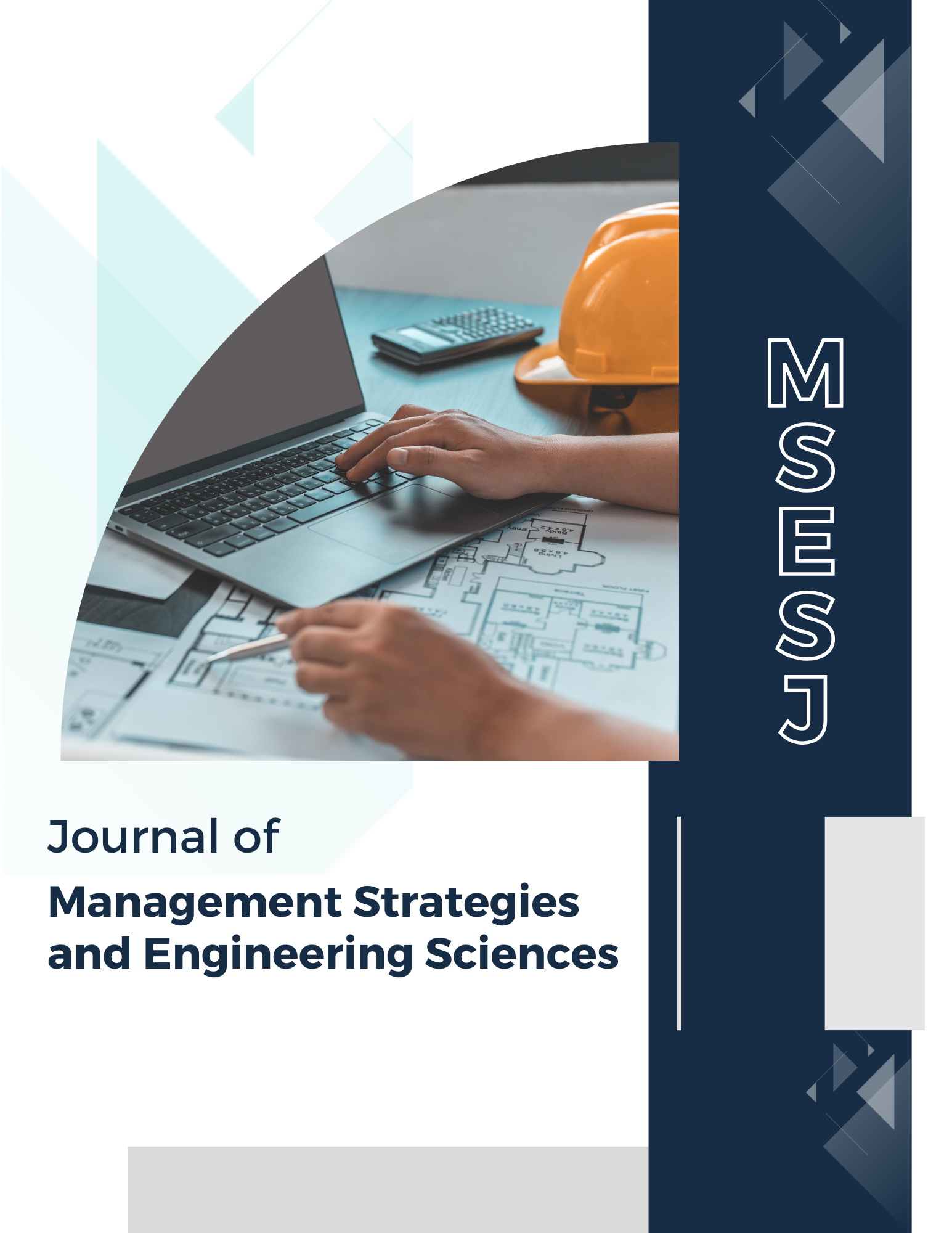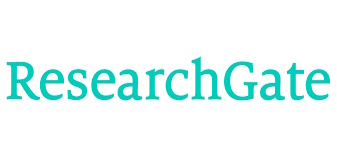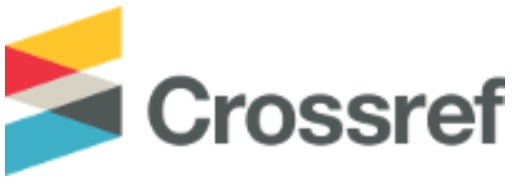The Function of Artificial Intelligence for Transcendent Governance with a Strategic Management Approach
Keywords:
Transcendent governance, artificial intelligence, strategic management of artificial intelligence implementation, opportunities for artificial intelligence implementation, mixed-methods analysisAbstract
This study follows a qualitative-quantitative method, employing textual content analysis in the qualitative section. Data collection tools include past research documents and library resources in this field. The data analysis method is based on open coding. According to the study’s findings, among 187 relevant articles and books, 42 studies were analyzed using a systematic review. After screening the indicators through the Delphi method, the remaining indicators were categorized into four groups for strengths and weaknesses and three groups for threats and opportunities, resulting in a total extraction of 55 indicators. The statistical population of this research consists of 10 government officials in governance who simultaneously held faculty positions in public administration and had authored works in this domain. In the quantitative section, utilizing the AHP-SWOT approach and analyzing internal and external factor matrices, the study sought to identify the most significant strengths and opportunities. It then developed and prioritized aggressive strategies to provide a practical framework for implementing artificial intelligence in governance. Ultimately, the strategies were ranked using the QSPM method. Based on the research findings, the most significant strength was facilitating informed decision-making based on logic, reason, and intuition, with a weight of 0.057, while the most important opportunity was enhancing democracy, with a weight of 0.105. The strategy of leveraging strengths in informed decision-making to improve democracy was ranked as the top strategy, with a score of 3.234. The results indicated that adopting informed decision-making based on logic and rationality as a superior strategy has significant potential for strengthening democracy and transparency in governance.
References
D. Kiakojouri, "Studying factors affecting communication skills in government organizations," Public Services Marketing, vol. 2, no. 2, p. 75, 2023.
Q. Gao and J. Zhang, ARTIFICIAL INTELLIGENCE GOVERNANCE AND THE BLOCKCHAIN REVOLUTION. SPRINGER VERLAG, SINGAPOR, 2024.
H. R. Yazdani and M. Hakiminia, "Identifying Challenges and Opportunities for the Implementation of Artificial Intelligence in Human Resource Management: A Meta-Synthesis Approach," Journal of Sustainable Human Resources, vol. 6, no. 10, 2024, doi: 10.2478/czoto-2024-0026.
C. Katzenbach and L. Ulbricht, "Algorithmic governance," Internet Policy Review, vol. 8, no. 4, pp. 1-18, 2019, doi: 10.14763/2019.4.1424.
W. G. de Sousa, E. R. P. de Melo, P. H. D. S. Bermejo, R. A. S. Farias, and A. O. Gomes, "How and where is artificial intelligence in the public sector going? A literature review and research agenda," Government Information Quarterly, vol. 36, no. 4, p. 101392, 2019, doi: 10.1016/j.giq.2019.07.004.
h. T. B. Jensen, "The Role of Artificial Intelligence and Cyber Security for Social Media," 2020, doi: 10.1109/IPDPSW50202.2020.00184.
R. Gorwa, "What is platform governance?," Information, communication & society, vol. 22, no. 6, pp. 854-871, 2019, doi: 10.1080/1369118X.2019.1573914.
J. Danaher, "Freedom in an Age of Algocracy," in Oxford Handbook on the Philosophy of Technology, 2020, pp. 250-272.
M. Esm Khani Aadeh, "The Role of Artificial Intelligence in Human Resource Management," 2023.
S. Zheng et al., "The ai economist: Improving equality and productivity with ai-driven tax policies," 2020.
M. K. Lee et al., "WeBuildAI: Participatory framework for algorithmic governance," Proceedings of the ACM on Human-Computer Interaction, vol. 3, no. CSCW, pp. 1-35, 2019, doi: 10.1145/3359244 10.1145/3359160 10.1145/3359283 10.1145/3359284.
Z. Mohammadpour and D. Kiakojouri, "Providing a Model of Accounting Action Management in Iranian Government Organizations," Public Organizations Management, vol. 11, no. Series 43, pp. 169-190, 2023.
J. Danaher et al., "Algorithmic governance: Developing a research agenda through the power of collective intelligence," Big data & society, vol. 4, no. 2, p. 2053951717726554, 2017, doi: 10.1177/2053951717726554.
M. Ma, "The Law’s new language," Harv. Int. Law J, vol. 61, 2020.
H. S. Sætra, "Science as a vocation in the era of big data: The philosophy of science behind big data and humanity’s continued part in science," Integrative Psychological and Behavioral Science, vol. 52, no. 4, pp. 508-522, 2018, doi: 10.1007/s12124-018-9447-5.
H. S. Sætra, "When nudge comes to shove: Liberty and nudging in the era of big data," Technology in Society, vol. 59, p. 101130, 2019, doi: 10.1016/j.techsoc.2019.04.006.
H. S. Sætra, "A shallow defence of a technocracy of artificial intelligence: Examining the political harms of algorithmic governance in the domain of government," Technology in Society, vol. 62, p. 101283, 2020, doi: 10.1016/j.techsoc.2020.101283.
M. Janssen and G. Kuk, "The challenges and limits of big data algorithms in technocratic governance," Government Information Quarterly, vol. 33, no. 3, pp. 371-377, 2016, doi: 10.1016/j.giq.2016.08.011.
Z. Sharifzadeh, A. H. Mirkoush, and M. M. Hosseini, "The Role of Artificial Intelligence and Strategies for its Implementation in the United States," Journal of Political Strategy, vol. 7, no. 4, pp. 57-87, 2023.
D. Castro and J. New, The promise of artificial intelligence. 115: Center for data innovation, 2016, pp. 32-35.
S. Alon-Barkat and M. Busuioc, "Human-AI interactions in public sector decision making:“automation bias” and “selective adherence” to algorithmic advice," Journal of Public Administration Research and Theory, vol. 33, no. 1, pp. 153-169, 2023, doi: 10.1093/jopart/muac007.
C. Abungu, M. Malonza, and S. N. Adan, "Can apparent bystanders distinctively shape an outcome? Global south countries and global catastrophic risk-focused governance of artificial intelligence," 2023.
A. Zuiderwijk, Y. C. Chen, and F. Salem, "Implications of the use of artificial intelligence in public governance: A systematic literature review and a research agenda," Government Information Quarterly, vol. 38, no. 3, p. 101577, 2021, doi: 10.1016/j.giq.2021.101577.
Y. K. Dwivedi et al., "Artificial Intelligence (AI): Multidisciplinary perspectives on emerging challenges, opportunities, and agenda for research, practice and policy," International Journal of Information Management, vol. 57, p. 101994, 2021, doi: 10.1016/j.ijinfomgt.2019.08.002.
F. Babaian, M. Safdari Ranjbar, and A. Hakim, "Analyzing the Role of Artificial Intelligence in the Public Policy Cycle: A Meta-Synthesis Approach," Journal of Improvement Management, vol. 17, no. 2, pp. 115-150, 2023.
M. Azimi, "Dimensions of Artificial Intelligence and Challenges Ahead in the Realm of International Law," 2023.
N. Jafari Hezarani, "Artificial Intelligence: A Threat to Free and Fair Elections," 2023.
A. Androutsopoulou, N. Karacapilidis, E. Loukis, and Y. Charalabidis, "Transforming the communication between citizens and government through AI-guided chatbots," Government Information Quarterly, vol. 36, no. 2, pp. 358-367, 2019, doi: 10.1016/j.giq.2018.10.001.
M. Nordström, "AI under great uncertainty: implications and decision strategies for public policy," Ai & Society, pp. 1-12, 2021, doi: 10.1007/s00146-021-01263-4.
D. Valle-Cruz, E. Alejandro Ruvalcaba-Gomez, R. Sandoval-Almazan, and J. Ignacio Criado, "A review of artificial intelligence in government and its potential from a public policy perspective," 2019, pp. 91-99, doi: 10.1145/3325112.3325242.
A. Maleki and M. Kafi, "The Role of Artificial Intelligence in Diplomacy: Considerations for the Islamic Republic of Iran," Journal of Strategic Studies, vol. 98, pp. 311-331, 2022.
F. Miao, W. Holmes, R. Huang, and H. Zhang, AI and education: A guidance for policymakers. UNESCO Publishing, 2021.
B. Schuelke‐Leech, S. R. Jordan, and B. Barry, "Regulating Autonomy: An Assessment of Policy Language for Highly Automated Vehicles," Review of Policy Research, vol. 36, no. 4, pp. 547-579, 2019, doi: 10.1111/ropr.12332.
B. W. Wirtz, J. C. Weyerer, and C. Geyer, "Artificial intelligence and the public sector- Applications and challenges," International Journal of Public Administration, vol. 42, no. 7, pp. 596-615, 2019, doi: 10.1080/01900692.2018.1498103.
D. Toll, I. Lindgren, U. Melin, and C. Madsen, "Values, Benefits, Considerations and Risks of AI in Government," JeDEM - EJournal of EDemocracy and Open Government, vol. 12, no. 1, pp. 40-60, 2020, doi: 10.29379/jedem.v12i1.593.
T. Q. Sun and R. Medaglia, "Mapping the challenges of Artificial Intelligence in the public sector: Evidence from public healthcare," Government Information Quarterly, vol. 36, no. 2, pp. 368-383, 2019, doi: 10.1016/j.giq.2018.09.008.
H. Felzmann, E. Fosch-Villaronga, C. Lutz, and A. Tamò-Larrieux, "Towards Transparency by Design for Artificial Intelligence," Science and Engineering Ethics, vol. 26, no. 6, pp. 3333-3361, 2020, doi: 10.1007/s11948-020-00276-4.
Y. Zheng, H. Yu, L. Cui, C. Miao, C. Leung, and Q. Yang, "SmartHS: An AI platform for improving government service provision," 2018, vol. 32, 1 ed., doi: 10.1609/aaai.v32i1.11382.
T. Yigitcanlar and F. Cugurullo, "The sustainability of artificial intelligence: An urbanistic viewpoint from the lens of smart and sustainable cities," Sustainability, vol. 12, no. 20, p. 8548, 2020, doi: 10.3390/su12208548.
P. K. Agarwal, "Public administration challenges in the world of AI and bots," Public Administration Review, vol. 78, no. 6, pp. 917-921, 2018, doi: 10.1111/puar.12979.
C. Coglianese and D. Lehr, "Regulating by robot: Administrative decision making in the machine-learning era," Geo. LJ, vol. 105, p. 1147, 2016.
S. Giest, "Big data for policymaking: fad or fasttrack?," Policy Sciences, vol. 50, no. 3, pp. 367-382, 2017, doi: 10.1007/s11077-017-9293-1.
B. W. Wirtz, J. C. Weyerer, and B. J. Sturm, "The dark sides of artificial intelligence: An integrated AI governance framework for public administration," International Journal of Public Administration, vol. 43, no. 9, pp. 818-829, 2020, doi: 10.1080/01900692.2020.1749851.
A. D. Thierer, A. Castillo O’Sullivan, and R. Russell, "Artificial intelligence and public policy," Mercatus Research Paper, 2017.
M. Craglia, J. Hradec, and X. Troussard, "The Big Data and Artificial Intelligence: Opportunities and Challenges to Modernise the Policy Cycle," in Science for Policy Handbook, 2020, pp. 96-103.
I. Pencheva, M. Esteve, and S. J. Mikhaylov, "Big Data and AI-A transformational shift for government: So, what next for research?," Public Policy and Administration, vol. 35, no. 1, pp. 24-44, 2020, doi: 10.1177/0952076718780537.
J. Höchtl, P. Parycek, and R. Schöllhammer, "Big data in the policy cycle: Policy decision making in the digital era," Journal of Organizational Computing and Electronic Commerce, vol. 26, no. 1-2, pp. 147-169, 2016, doi: 10.1080/10919392.2015.1125187.
D. Valle-Cruz, J. I. Criado, R. Sandoval-Almazán, and E. A. Ruvalcaba-Gomez, "Assessing the public policy-cycle framework in the age of artificial intelligence: From agenda-setting to policy evaluation," Government Information Quarterly, vol. 37, no. 4, p. 101509, 2020, doi: 10.1016/j.giq.2020.101509.
A. Monarcha-Matlak, "Automated decision-making in public administration," 2021, vol. 192, pp. 2077-2084, doi: 10.1016/j.procs.2021.08.215.
M. Kuziemski and G. Misuraca, "AI governance in the public sector: Three tales from the frontiers of automated decision-making in democratic settings," Telecommunications Policy, vol. 44, no. 6, p. 101976, 2020, doi: 10.1016/j.telpol.2020.101976.












